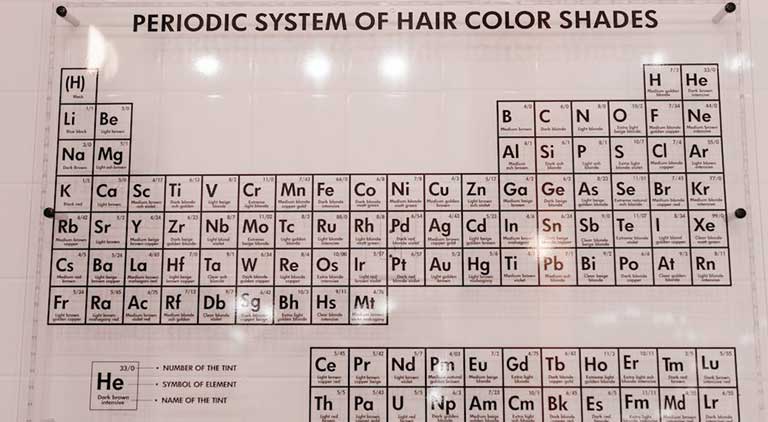The periodic table is extremely important in chemistry, as it neatly arranges atomic numbers and the properties of elements. It often appears in science classes and exams. However, many students might find it a bit intimidating at first. This article provides a straightforward explanation suitable for middle school students, detailing how the periodic table is structured, how elements are grouped, and some handy tips for memorizing it.
Periodic Table (Elements 1–118)
Alkali Metals
Alkaline Earth Metals
Transition Elements
Post-transition Metals
Metalloids
Nonmetals
Halogens
Noble Gases
Lanthanides
Actinides
🧪 What Is the Periodic Table?
The periodic table is a chart that arranges elements according to specific rules. Elements like iron (Fe), oxygen (O), and hydrogen (H) are the basic building blocks of matter, and there are 118 in total.
🧩 Structure of the Periodic Table
● Horizontal Rows = “Periods”
The horizontal rows of the periodic table are called “periods.”
As you move from left to right, the atomic number increases by one each step.
For example:
- 1st → Hydrogen (H)
- 2nd → Helium (He)
- 3rd → Lithium (Li), and so on, in increasing numeric order.
● Vertical Columns = “Groups”
The vertical columns of the periodic table are called “groups.”
Elements in the same group share similar properties.
For example:
- Group 1 → Alkali Metals (highly reactive)
- Group 18 → Noble Gases (very stable and unreactive)
Looking at these columns reveals shared characteristics.
🎨 Grouping (Color Coding Makes It Easier!)
| Group Name | Characteristics | Examples |
|---|---|---|
| Alkali Metals | Highly reactive, soft metals | Li (Lithium), Na (Sodium) |
| Alkaline Earth Metals | Reactive, though less so than alkali metals | Ca (Calcium), Mg (Magnesium) |
| Transition Metals | Often form colored compounds; used in alloys | Fe (Iron), Cu (Copper), Zn (Zinc) |
| Nonmetals | Non-metallic elements; some are highly reactive | C (Carbon), N (Nitrogen), O (Oxygen) |
| Halogens | Toxic and reactive; used in disinfection | F (Fluorine), Cl (Chlorine) |
| Noble Gases | Extremely stable and unreactive gases | He (Helium), Ne (Neon) |
*In many textbooks or reference materials, you’ll find a color-coded periodic table. It’s highly recommended to memorize it along with the color groupings.
🧠 Tips for Memorizing the Periodic Table
✅ 1) Start With the Most Common Elements
In middle school science, elements like hydrogen, oxygen, nitrogen, carbon, helium, sodium often appear. Begin by learning these first.
For example, a mnemonic:
- “Happy Henry Likes Beans Brown Clean Nine Oranges For Neon”
— a playful twist on H, He, Li, Be, B, C, N, O, F, Ne (first 10 elements of the periodic table).
✅ 2) Use Color to Visualize
“Blue for metals, green for nonmetals, pink for gases…” Associating each group with colors can help you remember them more vividly.
✅ 3) Group Similar Properties Together
- Alkali metals → React with water, producing bubbles
- Noble gases → Hardly react, so used in balloons or neon lights
Putting similar properties together helps deepen your understanding.
🔚 Conclusion
The periodic table isn’t just a random chart; it’s like a map of chemistry.
Even if it seems difficult at first, once you understand the rules and patterns, it becomes extremely useful and fascinating.
Start by memorizing some key elements and groups, then find your own techniques to remember them!
By doing so, studying science will become more fun and engaging.
The periodic table may appear daunting initially, but by understanding its structure and layout, it becomes your “chemical roadmap.” We hope this article has helped you grasp how elements are organized and grouped. Next, try tackling some practice questions and craft your own memory aids. Enjoy mastering the periodic table!


コメント